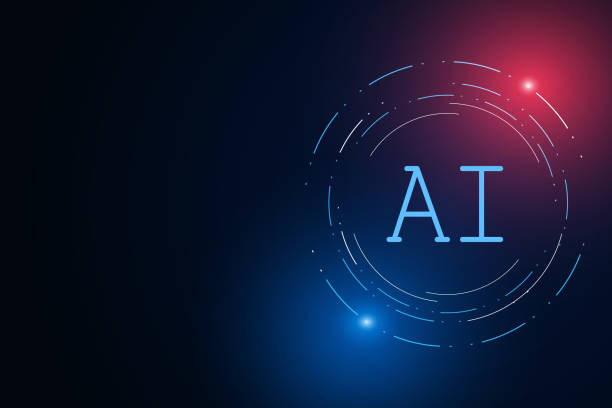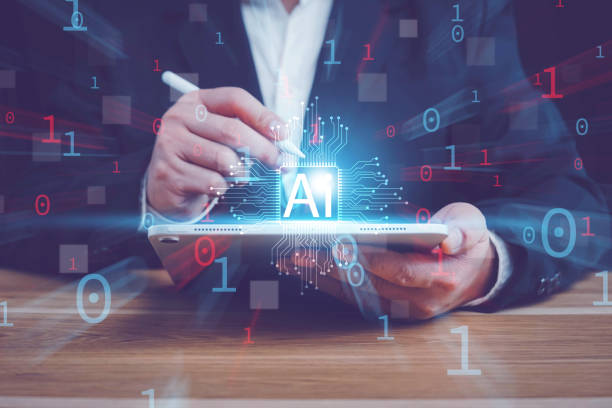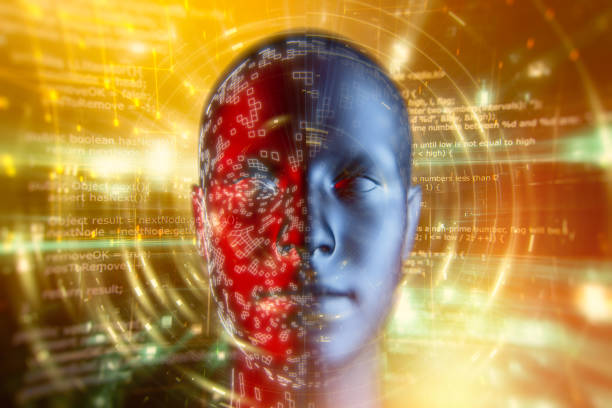What is an AI Robot and How Does It Work?

#AI Robot is a combination of Artificial Intelligence (AI) and Robotics.
Simply put, these robots are designed to mimic intelligent human behaviors.
These behaviors include learning from experience, solving problems, understanding natural language, and even making decisions.
Artificial intelligence allows the robot to sense its surroundings, process information, and act accordingly.
The way an AI robot works, in short, is that sensors collect information from the environment.
This information can include images, sounds, temperature, pressure, etc.
Then this information is transferred to a central processor.
In this processor, artificial intelligence algorithms analyze the information and decide what the robot should do.
Finally, based on these decisions, the robot acts in the physical environment using motors, actuators, and other components.
For example, an AI robot designed to clean a house can use cameras and other sensors to identify obstacles, plan its route, and clean the floor using its vacuum cleaner.
AI robots are currently used in a wide range of industries and applications.
These applications include manufacturing, healthcare, education, transportation, and customer service.
Did you know that a weak company website loses you many opportunities daily? Solve this problem forever with professional corporate website design by Rasaweb!
✅ Create a powerful and reliable image of your brand
✅ Attract targeted new customers and increase sales
⚡ [Get a free website design consultation]
Types of AI Robots and Their Applications
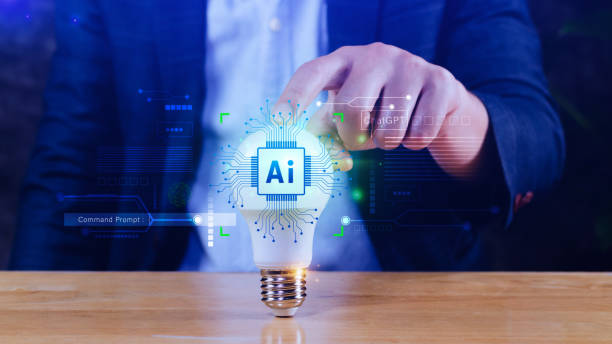
AI robots can be categorized based on various criteria, including the type of artificial intelligence used, the type of task they perform, and the environment in which they operate.
In general, AI robots can be divided into two main categories:
1.
Rule-based AI Robots These robots use a set of pre-defined rules to make decisions.
These rules are written by human programmers and tell the robot what to do in different situations.
These types of robots are suitable for simple and repetitive tasks, but cannot handle unexpected or complex situations well.
2.
Machine Learning-based AI Robots These robots use machine learning algorithms to learn from data.
These algorithms allow the robot to identify patterns in the data and make decisions based on them, without the need for explicit programming.
These types of robots are suitable for complex and unpredictable tasks, but require a large amount of data for training.
Some common applications of AI robots include:
- Manufacturing AI robots can be used to perform various tasks on production lines, such as assembly, packaging, and quality inspection.
- Healthcare AI robots can be used to assist surgeons, nurses, and other healthcare professionals.
They can also be used to diagnose diseases, provide personalized care, and provide rehabilitation services. - Education AI robots can be used as virtual teachers, teaching assistants, and providers of educational content.
- Transportation AI robots can be used to drive self-driving vehicles, deliver goods, and provide public transportation services.
- Customer Service AI robots can be used to answer customer questions, provide technical support, and solve problems.
AI robots are evolving and are expected to play a more important role in our lives in the future.
Advantages and Disadvantages of Using AI Robots
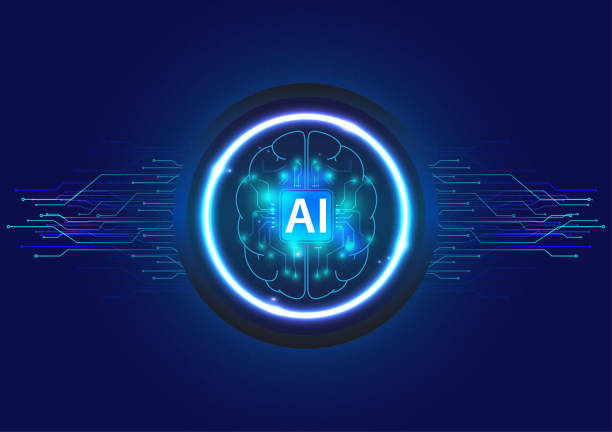
The use of AI robots has several advantages and disadvantages.
Here are some of the most important ones:
Advantages:
- Increased Productivity AI robots can perform tasks faster, more accurately, and more efficiently than humans.
- Reduced Costs AI robots can reduce labor, training, and maintenance costs.
- Improved Safety AI robots can perform dangerous or repetitive tasks that can lead to injury or fatigue.
- Increased Quality AI robots can perform tasks with greater accuracy and consistency than humans, which can lead to improved product and service quality.
- 24/7 Availability AI robots can work continuously, without the need for rest or leave.
Disadvantages:
- High Initial Cost AI robots can be expensive, both in terms of purchase and maintenance.
- Need for Expertise Installing, setting up, and maintaining AI robots requires expertise.
- Job Displacement The use of AI robots can lead to job losses for some people.
- Ethical Issues The use of AI robots can create various ethical issues, such as accountability, privacy, and security.
- Data Dependency Machine learning-based AI robots require a large amount of data for training.
Ultimately, the decision of whether or not to use AI robots should be based on a careful assessment of its advantages and disadvantages, and taking into account the specific circumstances of each application.
| Advantages | Disadvantages |
|---|---|
| Increased Productivity | High Initial Cost |
| Reduced Costs | Need for Expertise |
| Improved Safety | Job Displacement |
| Increased Quality | Ethical Issues |
| 24/7 Availability | Data Dependency |
Challenges Facing the Development of AI Robots

The development of AI robots faces several challenges.
These challenges include:
- Data Collection and Processing Machine learning-based AI robots require a large amount of data for training.
Collecting, labeling, and processing this data can be challenging and costly. - Developing AI Algorithms Developing AI algorithms that are capable of performing complex and unpredictable tasks is a technical challenge.
- Integrating AI with Robotics Integrating AI algorithms with robotics hardware in a way that performs optimally is an engineering challenge.
- Ethical Issues The use of AI robots can create various ethical issues, such as accountability, privacy, and security.
- Social Acceptance Acceptance of AI robots by society may face resistance due to fear of job loss or concern about potential risks.
To overcome these challenges, investment in research and development, training of specialists, and the creation of an appropriate regulatory framework are needed.
AI robots face these challenges, but recent advances in artificial intelligence and robotics show that these challenges are solvable.
Are you unhappy with low sales from your online store?
Rasaweb is your solution for having a professional and high-selling online store.
✅ Significant increase in sales and revenue
✅ Easy and enjoyable shopping experience for customers
⚡ Get a free consultation from Rasaweb right now!
What Will the Future of AI Robots Be?

The future of AI robots looks bright.
AI robots are expected to play a more important role in our lives in the future and be used in a wide range of industries and applications.
Some predictions about the future of AI robots include:
- Expanding the use of AI robots in various industries AI robots will gradually be used in more industries, including agriculture, construction, logistics, and energy.
- Developing self-driving AI robots Self-driving AI robots, such as self-driving cars and self-driving drones, will become more common in the future.
- Developing humanoid AI robots Humanoid AI robots, which resemble humans and can perform human tasks, will be developed in the future and used in services such as elderly care and education.
- Increasing human-robot interaction Human-robot interaction will increase in the future, and robots will become an integral part of our daily lives.
- Developing artificial general intelligence Developing artificial general intelligence (AGI), which is capable of performing any task that a human can perform, is an ambitious goal that may be achieved in the future.
Of course, the development of AI robots also comes with potential risks.
To ensure that this technology is used for the benefit of society, attention needs to be paid to ethical issues and the creation of an appropriate regulatory framework.
AI robots present us with a future full of opportunities and challenges.
With proper management, this technology can be used to improve human lives and create a better world.
Ethical Considerations in the Development and Use of AI Robots
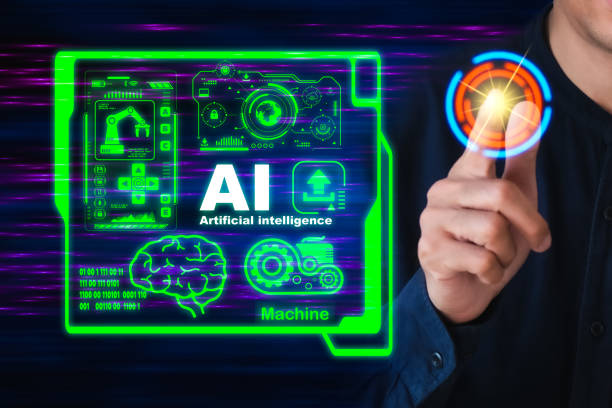
The development and use of AI robots raises important ethical considerations.
These considerations include:
- Accountability Who is responsible for the actions of AI robots? If an AI robot causes harm, who should be held accountable?
- Privacy AI robots can collect and process a large amount of data.
How can individuals’ privacy be protected from misuse of this data? - Security AI robots can be hacked or used for malicious purposes.
How can the security of AI robots be protected? - Discrimination AI algorithms can be discriminatory, especially if they are trained on discriminatory data.
How can discrimination be prevented in AI robots? - Transparency The performance of AI robots should be transparent and explainable.
How can it be ensured that people can understand how AI robots make decisions?
To address these ethical considerations, an appropriate ethical and regulatory framework needs to be created.
This framework should include principles and guidelines for the development, deployment, and use of AI robots.
Also, there is a need to train specialists and raise public awareness about the ethical issues related to AI robots.
AI robots have great potential to improve human lives, but in order to realize this potential, their ethical considerations must be addressed.
AI Robots and Their Impact on the Labor Market

AI robots have a significant impact on the labor market, and this impact is both positive and negative.
Positive Impacts:
- Creating New Jobs The development, production, deployment, and maintenance of AI robots requires a specialized workforce, which can lead to the creation of new jobs.
- Increasing Productivity and Economic Growth AI robots can contribute to economic growth by increasing productivity and reducing costs.
- Improving Working Conditions AI robots can perform dangerous or repetitive tasks, which can lead to improved working conditions for humans.
Negative Impacts:
- Job Displacement AI robots can automate some jobs, which can lead to job losses for some people.
- Increasing Inequality Job losses due to automation can lead to increased inequality in society, especially if low-skilled individuals are more at risk of job loss.
- Need for Retraining To adapt to the new labor market, individuals may need to retrain and acquire new skills.
To mitigate the negative impacts of AI robots on the labor market, policies are needed to support retraining, create new jobs, and support affected individuals.
Also, there is a need to examine issues related to wealth and income distribution in an automated economy.
| Industry | Description |
|---|---|
| Manufacturing | Robots are used on production lines, assembly, and quality inspection. |
| Healthcare | Robots assist surgeons and provide personalized care. |
| Logistics | Robots are used in warehouses and for delivering goods. |
| Customer Service | Chatbots answer customer questions. |
| Agriculture | Robots are used in harvesting crops and monitoring farms. |
AI robots are a transformative technology that can create both opportunities and challenges for the labor market.
The Role of Governments in the Development and Regulation of AI Robots

Governments play an important role in the development and regulation of AI robots.
This role includes:
- Investing in Research and Development Governments can help advance AI technology by investing in AI research and development.
- Creating Technical Standards Governments can ensure the safety and reliability of AI robots by creating technical standards for them.
- Enacting Laws and Regulations Governments can regulate the use of AI robots and protect individuals’ rights and interests by enacting laws and regulations.
- Supporting Education and Employment Governments can help the labor market adapt to AI technology by supporting education and employment in the field of AI.
- International Cooperation Governments can ensure coordination and information exchange in the field of AI by engaging in international cooperation in the field of AI.
Regulating AI robots is a complex challenge that requires a comprehensive and balanced approach.
Governments must strike a balance between supporting innovation and protecting individuals’ rights and interests.
AI robots are a powerful technology that can be used for positive purposes.
With proper regulation, governments can use this technology to improve human lives and create a more just society.
Robotics is an important aspect in the development of this technology.
Are you losing business opportunities because of an old website? With Rasaweb, solve the problem of not attracting potential customers through the website forever!
✅ Attract more high-quality leads
✅ Increase brand credibility in the eyes of customers
⚡ Get a free consultation on corporate website design
Successful Examples of Using AI Robots in Iran and the World

AI robots are currently used in many industries and applications around the world.
Here are a few successful examples:
- Self-Driving Cars Companies like Tesla and Waymo are developing self-driving cars that use AI to drive.
- Surgical Robots Surgical robots like Da Vinci help surgeons perform complex operations with greater precision.
- Chatbots Chatbots are used in customer service, technical support, and marketing.
- Warehouse Robots Warehouse robots like Kiva Systems are used in warehouses to move goods and increase productivity.
- Agricultural Robots Agricultural robots are used in harvesting crops, spraying, and monitoring farms.
In Iran, efforts are also underway to develop and use AI robots.
For example, some companies are developing chatbots for customer service and warehouse robots for logistics.
These examples show that AI robots have great potential to improve human lives and increase productivity in various industries.
By investing in research and development and supporting innovation, this technology can be used for the economic and social development of the country.
AI robots can play a very important role in the progress of societies.
How Can We Prepare to Enter the World of AI Robots?

To prepare to enter the world of AI robots, we can take the following steps:
- Learning the Principles of AI By learning the principles of AI, we can gain a better understanding of this technology and its applications.
- Acquiring Technical Skills By acquiring technical skills related to AI, such as programming, machine learning, and robotics, we can work in this field.
- Continuous Learning Given the pace of AI advancement, continuous learning and updating information is essential.
- Developing Soft Skills Soft skills such as problem-solving, critical thinking, and creativity are also essential for success in the world of AI robots.
- Networking By connecting with people active in the field of AI, we can learn from their experiences and discover new opportunities.
AI robots are a transformative technology that can create many opportunities for individuals and communities.
With proper preparation, we can make the best use of these opportunities.
By following these steps, you can prepare yourself to enter the growing world of AI robots.
Frequently Asked Questions
| Question | Answer |
|---|---|
| What is an AI Robot? | It is a robot that uses artificial intelligence capabilities to understand the environment, reason, learn, and make decisions in order to perform complex tasks independently. |
| What is the main difference between a regular robot and an AI robot? | AI robots can learn and adapt to their environment, while regular robots usually operate based on fixed and pre-determined programming. |
| In what fields are AI robots used? | In fields such as industry (production lines), medicine (robotic surgeries), services (customer support, smart vacuum cleaners), exploration (space and underwater), and entertainment. |
| How do AI robots learn? | They acquire new skills through machine learning (Machine Learning) and deep learning (Deep Learning) algorithms, by analyzing large data and identifying patterns. |
| Can AI robots have emotions? | Currently, no. They can identify or simulate emotions, but they do not have a real experience of emotions like humans. |
| What are the most important advantages of using AI robots? | Increased productivity, reduced human error, performing dangerous or repetitive tasks, and providing innovative and efficient services. |
| What are some of the challenges in developing AI robots? | The need for abundant and high-quality data, the complexity of algorithms, ethical issues, cybersecurity, and the high cost of research and development. |
| Are AI robots dangerous to humans? | By following safe design principles and ethical regulations, no. Concerns are more related to social and economic impacts such as changes in the labor market. |
| What is an example of an AI robot in everyday life? | Smart vacuum cleaner robots (such as Roomba) that automatically map and clean the house, or smart voice assistants (such as Siri and Alexa). |
| How is the future of AI robots predicted? | They are expected to become smarter, more autonomous, and capable of more complex interaction with humans, and play a more prominent role in industry, medicine, transportation, and everyday life. |
And other services of Rasa Web Advertising Agency in the field of advertising
Smart Advertising Campaign: Transform your click-through rate with precise audience targeting.
Smart Marketplace: An innovative platform for improving campaign management with intelligent data analysis.
Smart Digital Advertising: A new service to increase the click-through rate by optimizing key pages.
Smart Advertising Campaign: A new service to increase site visits by optimizing key pages.
Smart Content Strategy: A new service to increase SEO ranking by using real data.
And more than hundreds of other services in the field of internet advertising, advertising consulting and organizational solutions
Internet Advertising | Advertising Strategy | Advertorial
Resources
Artificial Intelligence Robotics
,The development of artificial intelligence in robots started
,Using artificial intelligence in robots and speeding up the process of simple activities
,How does artificial intelligence control robots? +Photo report
? Are you ready to transform your business in the digital world? Rasaweb Digital Marketing Agency offers comprehensive solutions for your growth and visibility with expertise in responsive website design, SEO, and online campaign management. Contact us today for a consultation and take big steps towards success.
📍 Tehran, Mirdamad Street, next to Central Bank, Kazerun South Alley, Ramin Alley No. 6
“`

